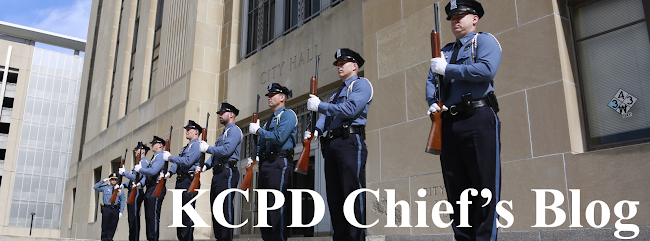There has been much talk about senseless violence in Kansas City, but a recent high-profile case really highlighted what senseless violence looks like and how one bad decision led to another and another. This case rightly received a lot of attention because the victim was a child, and she was shot where all children should feel safe – just outside an event at school.
A chain of tragic, senseless and completely preventable events started the night of Feb. 12 outside a high school basketball game. A 15-year-old girl was murdered in the parking lot at Central High School. An 18-year-old female student at the school and another 21-year-old woman are charged with her murder. It was the result of a dispute that started inside at the game. Instead of talking out their differences or splitting up to cool off, the suspects drove up to the victim just outside the school doors, and the 21-year-old opened fire on her. In her interview with police, the suspect told detectives she “may have overreacted and she wished she would’ve left.” She also said, “I let the fire go.”
Officers identified the suspects in less than an hour. Within 18 hours, they were in custody.
A few days later, on Feb. 16, detectives saw threats posted on social media between the victim’s and suspects’ families. They went to the homes of each to inform them police were aware of the threats and would be closely monitoring their actions. We call these Risk for Retaliation meetings. Later that night, detectives learned a family member of the victim even planned to be arrested so she could retaliate against the suspects inside the Jackson County Jail. Police and jail staff met and formed a plan to prevent that from happening.
The ridiculous violence continued at the funeral of the 15-year-old victim on Saturday, Feb. 23. Given the senselessness that led to her death and threats of retaliation, we assigned uniformed officers to watch over the funeral home and church during her services. They heard multiple gunshots in the church parking lot and saw a vehicle speeding away. They pursued the vehicle, which did not stop, ignored traffic signals and exceeded the speed limits, reaching 75 to 90 mph before it was involved in a hit-and-run collision. The three occupants of the car ran off, throwing two guns along the way. Officers caught all three occupants, and a police canine helped officers find the two loaded guns the suspects had discarded. One of the guns had been reported stolen. All three of those men – ranging in age from 19-22 – now face a variety of felony charges.
All of this violence was for what? What did any of this accomplish other than ending the life of a 15-year-old and ruining the futures of the two young women responsible for her death? What does shooting at the funeral – or any act of retaliation, for that matter – accomplish? No one ever won, the cycle of violence continued, and more lives were put at risk.
This was by no means the first act of violence at the funeral of a Kansas City homicide victim. It has occurred countless times, even in funeral processions driving on the highway. Funerals are supposed to be a time for family members and friends to remember the lives of their loved ones and reflect upon and grieve their loss. They are events that should be surrounded in respect. Yet people who perpetuate the cycle of violence in Kansas City turn funerals into armed conflicts. This is where family members and everyone in Kansas City can get involved. This is where the members of our community can say that kind of behavior isn’t welcome, and if anyone intends to bring anything but an attitude of respect to a funeral, they’re not allowed.
As a police department, we can’t make people have better conflict resolution skills. We can’t be there every time a disagreement over something trivial escalates into violence. What we can and are doing is working to interrupt the cycle of violence, like the aforementioned Risk for Retaliation work we did. It’s why our officers were conducting surveillance outside that funeral. It’s why we seek out and take seriously reports of threats of violence on social media. It’s why we’ve made a concerted effort to work with urban-core teens in programs like the Youth Police Initiative, Youth Citizens Academy and Police Athletic League. Through these and other outreach efforts, we’ve shared anger management tools and built a bridge of trust, so young people don’t try to take matters into their own hands.
But we’re only a small part of the solution. A young person who thinks a gun is the best way to resolve a dispute reached that point long before police became involved. We are doing all we can to interrupt the cycle of violence in Kansas City, but we need your help. Family members, friends and classmates: if you know a potential violent conflict is brewing, please tell us. If we know before an incident occurs, we can save lives. It’s only by working together like this that we can prevent these crimes.
Send comments to kcpdchiefblog@kcpd.org
